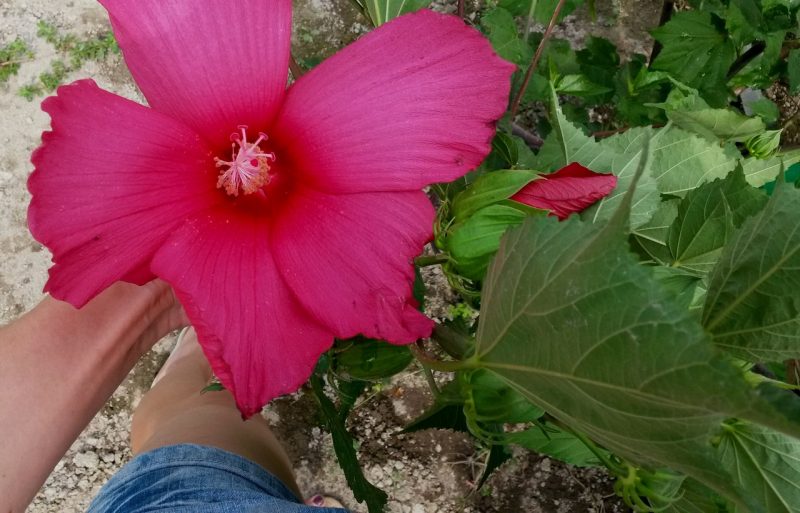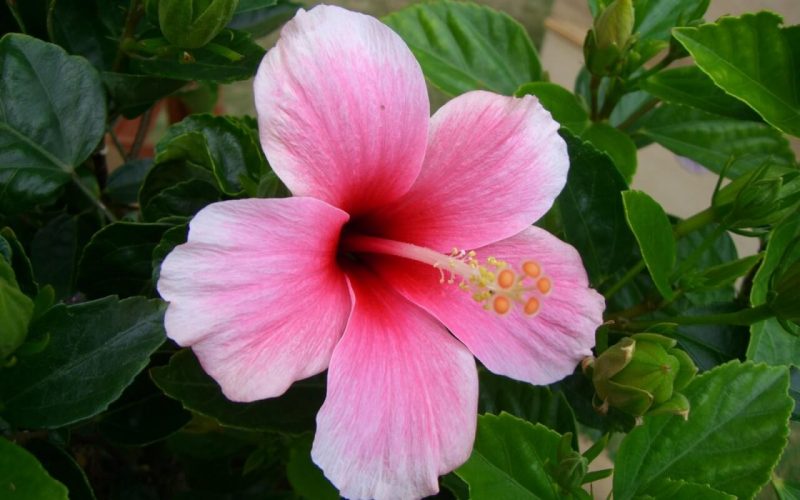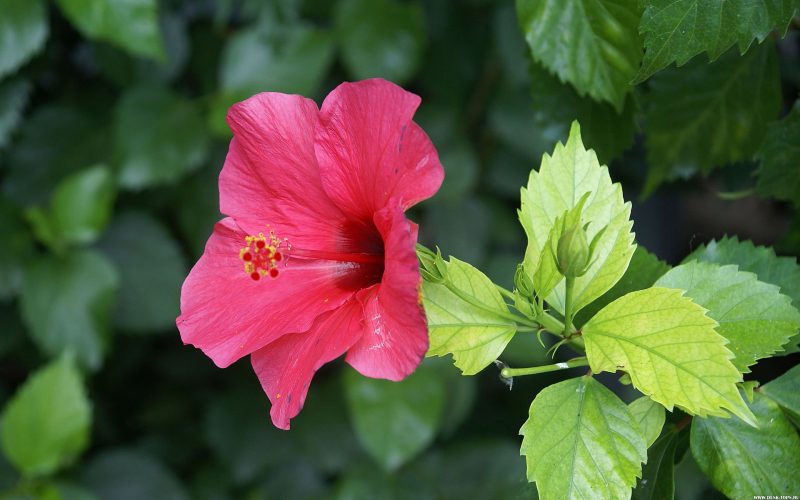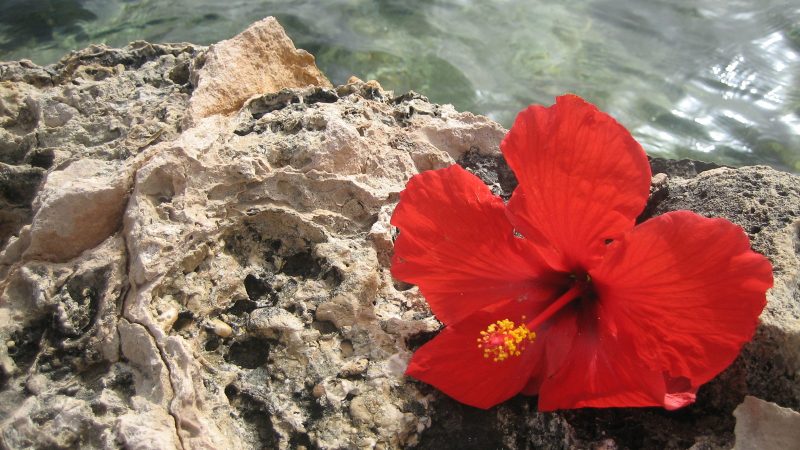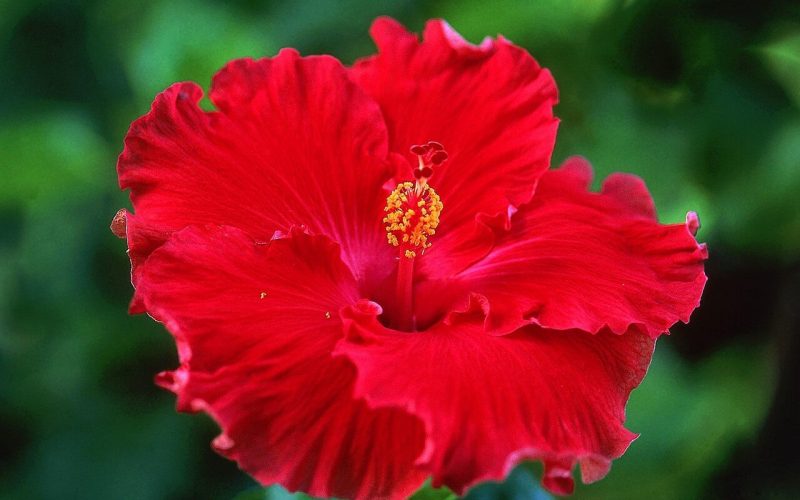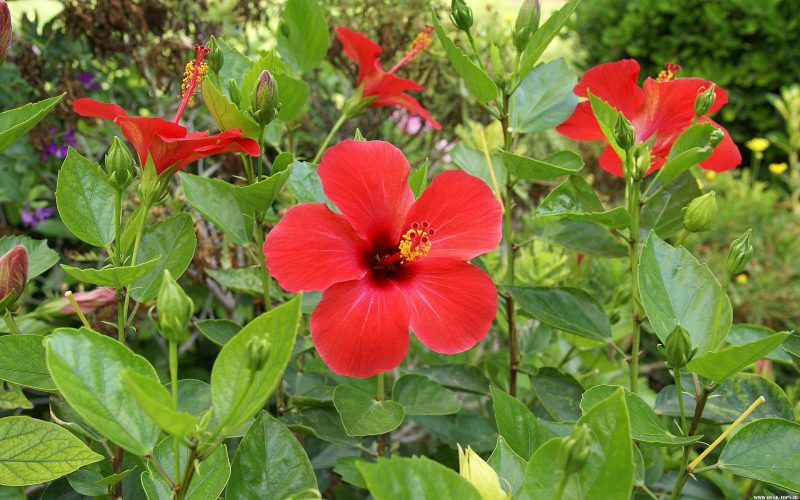Sudanese rose is an ornamental plant with healing properties.
Material Content:
Description and features of the variety
The Sudanese rose is also called the Venetian mallow, the flower of the pharaohs and the Hibiscus of Sabdariff. This plant is used to make tea called hibiscus. Dried plant petals came to us relatively recently, but meanwhile, all over the world for centuries they enjoy the unique taste of a healing drink.
On an industrial scale, the plant is grown in Mexico, Sudan, China, India, Thailand and other countries. In Egypt, hibiscus tea is a traditional drink.
The plant is a shrub, which in nature can reach 3.5 meters in height. The root system of the Sudanese rose is deep enough for the plant to survive the drought. The crown of the bush is highly branched, the stems have a reddish tint.
The main value of hibiscus is in flowers whose petals are thick. It is in the flowers of the plant that many beneficial substances are concentrated.
Growing at home
Despite the unpretentiousness of Sudanese roses, far from all flower growers have the opportunity to enjoy its colorful flowering at home. The fact is that for the cultivation of this flower should create certain conditions. But this problem is completely solvable.
The main condition for the rapid growth and flowering of hibiscus is regular watering. In no case should it be allowed to dry out an earthen coma, since the plant can lose its leaves. Especially you need to be careful in the summer, as the plant in the heat needs frequent watering.
Of great importance is the humidity in the room.Hibiscus loves high humidity, and therefore the leaves and air around the bush should be regularly sprayed with settled water.
Experienced growers recommend growing Sudanese roses on a light windowsill, as it is very photophilous. Without a bright sunny color, the shrub simply will not bloom. Moreover, it is necessary to provide good illumination in the winter, lighting up the plant with lamps.
In the wild, hibiscus grows in warm regions, so the temperature in the room should not be lower than +24 degrees. In winter, it is permissible to lower the temperature to +12. At lower temperatures, Sudanese roses may die.
When planting a plant should take into account its preference for soil. Rosa loves a nutritious soil with a neutral reaction.
Hibiscus can also be grown in a soil mixture, which is composed independently of:
- 4 parts of sheet land;
- 3 parts of turf;
- 1 part humus;
- 1 parts of sand.
It is useful to add a little ash and peat to the soil mixture to make the soil more saturated.
Be sure to have a good drainage in the pot. In conditions of abundant watering, there is a danger of root decay; therefore, water must not be allowed to stagnate in the pot.
Sudanese Rose Care
In addition to regular watering and spraying, Hibiscus rose needs annual transplants and top dressing. The florist can also optionally carry out the formation of the crown of the shrub, giving it the desired shape with the help of pruning.
Sudanese rose at home in the spring requires nutrition. They are necessary for lush and long flowering. Under the flower make fertilizers, which contain a lot of potassium and phosphorus. In the summer period, complex mineral mixtures for flowering are introduced under the plants.
When fertilizing, you need to be careful not to overfeed the flower with nitrogen.
A high nitrogen content in fertilizing will stimulate the bush to grow green mass and negatively affect flowering.
The first four years of life, hibiscus should be transplanted annually into a more spacious pot. Then the flower is transplanted only once every three years.
Flower pruning
Growing a flower at home is a very exciting experience, because for the care, he thanks lush flowering. But after flowering, the grower needs to be able to correctly prune the flowers.
Faded flowers are removed as soon as they begin to fade. When the plant has completely faded, you can begin forming pruning.
The formation of a bush is one of the stages of caring for a Sudanese rose. Pruning is carried out in two steps, so that during the break the plant can recover. For the first time, thin and weak branches are cut immediately after flowering. Then, after a couple of weeks, shoots growing inside the bush are removed. All sections must be done at an angle, the edge of the bevel should be directed upwards.
You can trim the flowers with ordinary home scissors. The branches of the plant are quite thin, so the secateurs can damage them very much. Formative pruning can be carried out not only after flowering in autumn, but also in spring, as soon as the dormant period ends. This does not harm the flowering, because hibiscus blooms only on young branches.
Hibiscus is never pruned in the summer. The fact is that the plant may not bloom after the procedure.
Breeding methods
Sudanese rose can be propagated by seed and cuttings. When propagating, plant seeds may not inherit the varietal qualities of the mother, therefore, such propagation is mainly used by breeders. An amateur gardener is much easier to plant a plant using cuttings.
Apical shoots are suitable for grafting. You can take the branches remaining after trimming the bush, but they give roots much more slowly.
Cuttings are cut about 8 cm each. Slices are treated with a growth stimulator. For these purposes, "Kornevin." Then the cuttings are rooted in water.You can plant twigs and immediately into the ground. To do this, cuttings are buried in a nutritious and well-moistened soil mixture, covered with a jar and put in a bright place. After the first signs of growth appear, the jar is removed. Planting regularly moisturize. The roots of young plants should appear within a month. In three to four months, the first flowers will already bloom on young roses.
It is interesting:Roly wet flower at home
The benefits and harms of plants
Many do not know what the benefits and harms of a plant are. Tea can be brewed from the hibiscus petals, which helps maintain normal blood pressure. Also, the drink is useful for the heart and blood vessels, tones, refreshes in the heat.
But a flavored drink can do harm. You can not drink hibiscus tea to people with high acidity, as well as during exacerbation of gallstone disease. It is contraindicated for allergy sufferers.
Growing hibiscus at home is a feasible task for even the most inexperienced gardeners. Despite its exotic origin, the plant is surprisingly unpretentious.
Read also:Amaryllis


